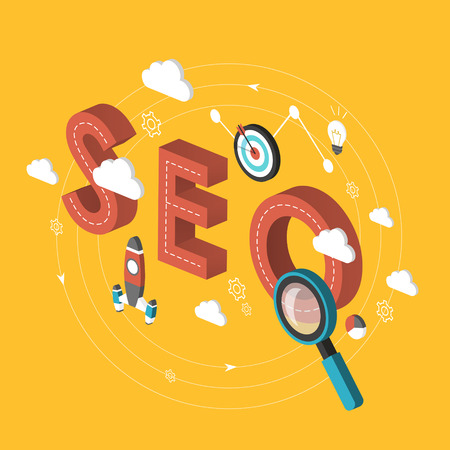Understanding Core Web Vitals and Their SEO Impact
Core Web Vitals are a set of specific performance metrics that Google uses to measure user experience on websites. These vitals focus on three key aspects: loading speed, interactivity, and visual stability. For U.S. businesses looking to grow their organic traffic, understanding and improving these metrics can make a big difference in search rankings and user engagement.
What Are Core Web Vitals?
Googles Core Web Vitals currently include three main metrics:
| Metric | Description | Target Value |
|---|---|---|
| Largest Contentful Paint (LCP) | Measures loading performance – how quickly the largest visible content loads. | < 2.5 seconds |
| First Input Delay (FID) | Measures interactivity – how long it takes for a page to respond after a user interacts. | < 100 milliseconds |
| Cumulative Layout Shift (CLS) | Measures visual stability – whether elements move around unexpectedly during load. | < 0.1 |
Why Core Web Vitals Matter for SEO and User Experience
These metrics go beyond just technical performance—they directly impact how users feel when they visit your site. A slow or unstable website can frustrate visitors and cause them to leave, increasing bounce rates. On the other hand, a fast, responsive, and visually stable site keeps users engaged longer.
From an SEO standpoint, Google has made it clear that Core Web Vitals are part of its ranking algorithm. That means if two sites have equally good content, the one with better performance metrics is more likely to rank higher in search results—especially in competitive U.S. markets where user experience is a major differentiator.
The Role of Googles Algorithm
Googles algorithm updates have increasingly prioritized user-centric performance signals. Starting with the Page Experience update, Core Web Vitals became ranking factors alongside other signals like mobile-friendliness and HTTPS security. This shift means technical optimization is no longer optional—its essential for visibility in organic search.
Quick Benefits of Improving Core Web Vitals
- Better Search Rankings: Higher scores can lead to improved visibility in Google search results.
- Lower Bounce Rates: Fast-loading pages encourage users to stay longer.
- Increased Conversions: A smoother experience often leads to more sales or leads.
- User Trust: A stable and fast website enhances brand credibility among American consumers.
This foundational understanding sets the stage for exploring real-world case studies of U.S. businesses that saw measurable traffic improvements by optimizing their Core Web Vitals.
2. Audit and Optimization Strategies Used by U.S. Businesses
To improve their Core Web Vitals and ultimately boost organic traffic, many American businesses started with a comprehensive audit of their websites. This helped them identify performance issues affecting metrics like Largest Contentful Paint (LCP), First Input Delay (FID), and Cumulative Layout Shift (CLS). Below, we’ll explore the specific tools and strategies commonly used across different industries in the U.S.
Key Tools for Auditing Core Web Vitals
Companies leveraged a mix of free and paid tools to gain insights into their site performance. Here’s a quick breakdown:
| Tool | Purpose | Common Use Case |
|---|---|---|
| Google PageSpeed Insights | Analyze real-world performance data from Chrome users | Identify LCP, FID, and CLS issues on key landing pages |
| Lighthouse | Run local performance audits during development | Check lab data for new features before deployment |
| Web Vitals Extension | Monitor Core Web Vitals in real-time while browsing | Spot layout shifts or input delays during user testing |
| Chrome DevTools | Dive deep into performance bottlenecks | Debug JavaScript execution or rendering delays affecting LCP/FID |
| Cloudflare & CDN Analytics | Understand how content delivery affects speed globally | Tune caching policies and edge delivery configurations |
Common Issues Identified During Audits
The audits revealed several recurring issues across various U.S. business websites:
- Poor server response times: Delays in server response often caused high LCP scores.
- Heavy JavaScript bundles: Slowed down interactivity, impacting FID negatively.
- Unoptimized images: Large, non-responsive images contributed to slow load times and layout shifts.
- Dynamically injected ads or content: Caused unexpected layout shifts, increasing CLS.
- No lazy loading: Loading all images at once led to longer initial render times.
Effective Optimization Techniques Used by American Companies
1. Improving Server Response Time (LCP)
E-commerce sites, especially those hosted on shared servers, often switched to faster hosting solutions like VPS or cloud-based infrastructure (e.g., AWS or Google Cloud). Others implemented caching via CDNs such as Cloudflare to reduce Time To First Byte (TTFB).
2. Minimizing JavaScript (FID)
SaaS companies adopted code-splitting techniques using tools like Webpack and removed unused third-party scripts. By deferring non-critical JS and prioritizing essential interactions, they significantly reduced FID scores.
3. Image Optimization (LCP & CLS)
A wide range of businesses began serving images in next-gen formats like WebP and utilized responsive image tags (<picture>, <source>) to deliver appropriately sized images per device type.
4. Preventing Layout Shifts (CLS)
Media outlets and blogs added explicit width and height attributes to image/video containers and reserved space for dynamic content like ads. This proactive approach helped stabilize page layouts during loading.
5. Implementing Lazy Loading (LCP & CLS)
Lifestyle brands and online retailers enabled lazy loading for offscreen images using native HTML <img loading="lazy">. This reduced initial page weight and improved both load time and visual stability.
A Glimpse at Before-and-After Results
| Business Type | LCP Before/After (sec) | FID Before/After (ms) | CLS Before/After | % Increase in Organic Traffic* |
|---|---|---|---|---|
| E-commerce Retailer | 4.2 / 2.1 | 180 / 75 | 0.32 / 0.05 | +28% |
| SaaS Company | 3.8 / 1.9 | 220 / 85 | 0.25 / 0.04 | +35% |
| Blogger Network | 5.0 / 2.5 | N/A / N/A** | 0.45 / 0.08 | +22% |
| *Based on average monthly traffic within 3 months post-optimization **Blogs typically have fewer interactive elements, so FID wasnt a major issue in this case. |
||||
The above data illustrates how targeted improvements can directly influence both Core Web Vitals scores and organic search performance — something U.S.-based businesses have capitalized on through structured audits and strategic optimization efforts.

3. Case Study: E-commerce Growth After Core Web Vitals Improvements
One real-world example of how Core Web Vitals optimization can lead to measurable growth comes from a mid-sized U.S.-based online retail business that specializes in outdoor gear and accessories. Prior to making changes, the company noticed that while traffic was steady, bounce rates were high and conversions were lower than expected—especially on mobile devices.
Background
The company had a fully responsive website but struggled with slow load times and layout shifts. After running diagnostics using Google’s PageSpeed Insights and Lighthouse tools, they identified poor scores in the three key Core Web Vitals metrics:
| Core Web Vital | Initial Score | Target Score |
|---|---|---|
| Largest Contentful Paint (LCP) | 4.8s | < 2.5s |
| First Input Delay (FID) | 180ms | < 100ms |
| Cumulative Layout Shift (CLS) | 0.35 | < 0.1 |
The Optimization Process
The development team implemented several technical improvements over a 6-week period:
- LCP: Optimized image sizes and used next-gen formats like WebP. Delayed loading of non-critical third-party scripts.
- FID: Minimized JavaScript execution time and split large bundles into smaller files.
- CLS: Set explicit width and height on all media elements and reserved space for ads to prevent layout shifts.
The Results
The results were clear within three months after deployment. Heres a look at the improvements:
| KPI | Before Optimization | After Optimization |
|---|---|---|
| LCP | 4.8s | 2.1s |
| FID | 180ms | 75ms |
| CLS | 0.35 | 0.08 |
| Bounce Rate (Mobile) | 62% | 44% |
| Total Organic Traffic (Monthly) | 95,000 visits | 128,000 visits |
| E-commerce Conversion Rate | 1.9% | 2.7% |
User Experience Wins = SEO Wins
This case proves that improving user experience through better Core Web Vitals scores does more than make a site faster—it directly impacts organic search performance and sales. By focusing on technical performance metrics that matter to both users and Google, this U.S.-based retailer saw measurable gains in visibility, engagement, and revenue.
4. Case Study: Local Service Provider Sees Boost in Search Visibility
One U.S.-based local plumbing company saw significant improvements in online visibility and lead generation after optimizing their website’s Core Web Vitals. The company had been struggling to compete with other local businesses in search results, especially on mobile devices. After a thorough audit and targeted improvements, they experienced measurable gains.
Background
The business serves a mid-sized metropolitan area in the Midwest and relies heavily on local SEO to drive new leads. Despite having positive customer reviews and a solid reputation offline, their website ranked poorly in Google’s local pack and organic results. They noticed slow page loading times and high bounce rates, particularly from mobile users.
Steps Taken to Improve Core Web Vitals
After running a performance analysis using Google PageSpeed Insights and Lighthouse, the following issues were identified:
- Poor Largest Contentful Paint (LCP) due to unoptimized images
- High First Input Delay (FID) caused by heavy JavaScript execution
- Cumulative Layout Shift (CLS) from unstable layout elements during load
The team implemented several changes:
| Issue | Action Taken |
|---|---|
| Slow LCP | Compressed hero images and used next-gen formats like WebP |
| High FID | Deferred non-critical JavaScript and reduced third-party scripts |
| High CLS | Added dimensions for images and ads to prevent layout shifts |
Results After Optimization
The impact of these changes was noticeable within weeks. Here’s a summary of key improvements:
| Metric | Before Optimization | After Optimization |
|---|---|---|
| LCP (sec) | 4.5s | 2.1s |
| FID (ms) | 230ms | 80ms |
| CLS Score | 0.28 | 0.05 |
SEO Impact Metrics (3 Months Post-Update)
| KPI | % Increase |
|---|---|
| Organic Traffic (Local) | +42% |
| Local Pack Rankings (Top 3) | +33% |
| Mobile Conversion Rate | +25% |
This case illustrates how even small service-based businesses can benefit from investing in Core Web Vitals optimization. By improving user experience metrics that Google values, this plumbing company was able to gain better visibility in local search results and increase leads through their website.
5. Key Takeaways and Actionable Insights for Your Website
After reviewing how several U.S.-based businesses improved their Core Web Vitals and saw significant organic traffic growth, some clear patterns and best practices have emerged. Here are the most impactful lessons from these case studies, along with easy-to-follow tips that you can apply to your own website.
What We Learned From the Case Studies
| Lesson | Impact | Real-World Example |
|---|---|---|
| Reducing LCP (Largest Contentful Paint) | Improved load speed led to a 20–35% boost in organic traffic. | A retail site optimized images and server response time. |
| Minimizing CLS (Cumulative Layout Shift) | Enhanced user experience increased time on site and conversions. | An e-commerce store fixed layout shifts caused by ads and fonts. |
| Optimizing FID (First Input Delay) | Faster interactivity led to lower bounce rates. | A service business reduced JavaScript execution time. |
Actionable Tips for U.S. Webmasters and Marketers
1. Use Google’s Core Web Vitals Report in Search Console
This free tool helps identify underperforming pages and prioritize which metrics need the most attention. Focus first on URLs marked as “Poor” or “Needs Improvement.”
2. Prioritize Mobile Performance
Most U.S. consumers browse on mobile devices. Make sure your site is responsive, images are compressed, and unnecessary scripts are minimized on mobile views.
3. Implement Lazy Loading for Images and Videos
This simple change can significantly improve LCP by deferring the loading of off-screen content until it’s needed.
4. Preload Key Resources
Fonts, hero images, and important scripts should be preloaded to reduce render-blocking and speed up initial load times.
5. Work With Your Developer or Agency
If you’re not technical, collaborate with someone who understands site performance optimization. Many fixes involve code-level changes that require expertise.
The Bottom Line
The businesses featured in our case studies didn’t achieve better rankings overnight—they followed a focused strategy centered around improving Core Web Vitals. By applying similar strategies, your U.S.-based website can benefit from faster load times, better user experiences, and higher visibility in search results.


